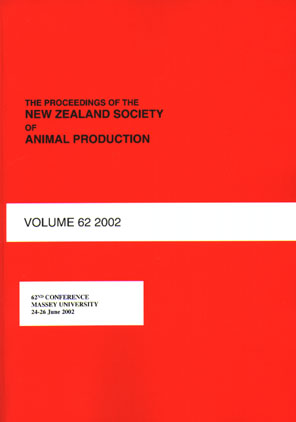Abstract
Data for the years 1986 to 1990 from the "Kamo" out-of-season lambing flock were subjected to analyses to determine the genetic variation for lambing date. The response variate was date of lambing (provided the ewe had a chance to mate for an autumn lambing) and this was transformed to an underlying normal scale by treating it as an ordered categorical response. Restricted maximum likelihood (REML) analyses were performed using an animal model. Year of record and age of ewe were included as fixed effects. There were 870 ewes having a total of 1967 lambing records. The estimate of heritability for standardised lambing data was 0.23 and repeatability 0.36 while the heritability for litter size was 0.03. Preliminary multivariate analysis indicated that the genetic correlation between standardised lambing date and litter size to be 0.09. At the time of disbanding of the flock samples of ewes selected on the phenotypic response (i.e. number of times lambed in autumn) of the ewe or of her dam, were brought to Ruakura. In 1991 following a best linear unbiased prediction (BLUP) analyses these were assigned to Autumn and Spring lambing flocks on the basis of their breeding value (BV) for standardised date of lambing. The average BV for the Autumn flock was - 0.13 while that for spring was +0.07 and there was a 26 day difference in mean lambing date (167 vs 193).
Proceedings of the New Zealand Society of Animal Production, Volume 52, , 93-96, 1992
| Download Full PDF | BibTEX Citation | Endnote Citation | Search the Proceedings |

This work is licensed under a Creative Commons Attribution-NonCommercial-NoDerivatives 4.0 International License.

